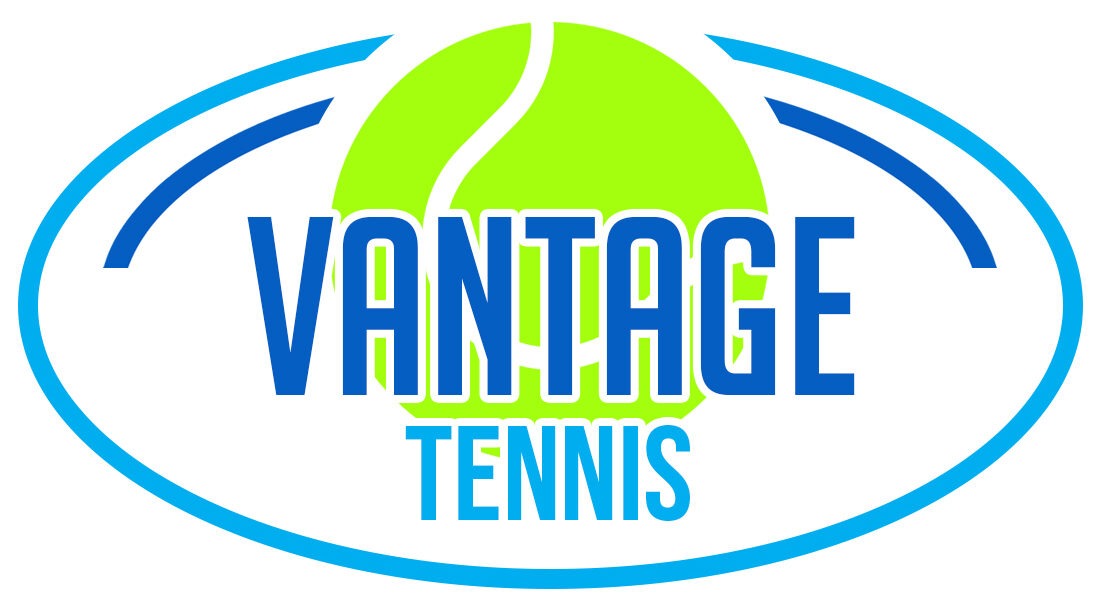During all my years as a coach, I’ve observed that the majority of players who come to me seeking to improve their tennis skills and competitive results share a common challenge: the lack of consistency. In this article, I will explain the importance of consistency and why it serves as the fundamental key for a player to enhance every other aspect of their game.
Every time I go to a tournament where there are many young competitors between 12, 14 and 16 years old, I find myself surprised with the extreme lack of consistency they possess. When I speak to their parents or with the players, they assume that the reason is mainly technical, when most of the time is not. How many times do we see players with nice strokes and good technique, but at the end of every point, they finish with an unforced error? We also find the opposite: players with an average or unorthodox technique make very few mistakes and end up winning matches, giving the sensation that they haven’t done anything to deserve the win. Obviously, the lack of consistency can be due to technical problems. However, when the technique is good,d and there is still no consistency, the problem is much more simple: trying to play over their capacities.
Players who lack consistency often attempt to hit the ball at a speed beyond their control, go for winners in difficult situations, and lack the necessary patience to set up the point effectively. Understanding the importance of consistency allows players to develop the discipline needed to wait for the right moment to attack and play aggressively.
To correct this problem, we have to understand that consistency and being solid means playing within our capacities, accepting what we have, and being realistic. If a player is not capable of making 30 deep shots at a 70% pace, how can I expect them to be aggressive and look for down-the-line winners in a match? If a player is not capable of hitting 15 cross-court backhands at an 80% pace, how can I ask him to hit angles and change directions with the backhand? When players have unreal expectations in their strokes (play faster, harder, more aggressive than they are capable of), their consistency decreases.
In order for players to improve their consistency, they have to slow down their pace until they can find a comfortable rhythm in which they can hit 25 to 30 balls in each rally and exercise, this way players will feel more control in the situation, they will improve and also automatize their movements and strokes. When this is done, the player’s confidence increases (the importance of consistency is the first aspect of the game that helps to have confidence), and just like a touch of magic, the player starts to hit the ball stronger and to increase his rhythm of play. This process of working at a slower pace is what will make the player improve much faster.

During my time as a player, I had the great luck of sharing training sessions with many elite players (David Ferrer, Marat Safin, Dinara Safina, Sara Errani, and many others). It was always really impressive to see how hard they hit the ball, but what was more impressive was the control and consistency they had over their strokes. To be able to achieve a high level of tennis and hit really hard shots like these players, one has to first put a lot of ball in the court with good technique and learn to control the shots at a manageable rhythm during the development stages.
In tennis, there are stages and steps, and I firmly believe that a player will never progress adequately if he doesn’t have a consistent game base. On too many occasions, parents of young players and even the players (generally between 12-16 years old) come to me believing they are not having results because they should hit harder, be more aggressive, play more inside the court, or look for more winners when in reality the majority of times players just need to improve their consistency.
There are many aspects of the game that are important to develop and work on like for example:
- Learning to defend correctly with strength and, 99% of the time, cross-court.
- Attaching the ball inside the court, the opponent hits short balls.
- Learning to open the court with good cross-court shots or angles to place the opponent off the court.
- Change the heights to a point that makes the other player uncomfortable and breaks the rhythm of play.
- Learning to shorten plays by coming into the nets on the right occasions.
All of these aspects are important for the improvement and evolution of a player, but they can only be worked on and developed if the player has reached a consistent base first.
#ConsistencyIsTheKey #NoPainNoGame #StepByStep
Spanish Version
LA IMPORTANCIA DE LA CONSISTENCIA
Durante todos mis años como entrenador, he podido comprobar como la gran
mayoría de jugadores que han venido para mejorar su nivel de tenis y especialmente
sus resultados en competición, tienen el mismo problema: La falta de consistencia.
En este artículo explicaré porque la consistencia es la pieza fundamental para que un
jugador pueda mejorar todos los demás aspectos del juego.
Cada vez que voy a un torneo donde compiten jugadores jóvenes, de 12,14 o 16 años
me sorprende la extrema falta de consistencia que tienen. Cuando converso con los
padres o los propios jugadores, asumen que la razón es de origen técnico, cuando la
mayor parte de las veces no lo es. ¿Cuántas veces vemos a chicos jugando un partido
con buena técnica, golpes bonitos pero que al final cada punto termina con un error no
forzado? Y luego nos encontramos con el caso contrario, jugadores con una técnica no
tan ortodoxa, golpes poco estéticos pero que cometen muy pocos errores y acaban
ganando el partido dando la sensación de que no han hecho nada.
Obviamente la falta de consistencia puede deberse a problemas técnicos, pero cuando
la técnica es correcta y aun así no hay consistencia, el problema es mucho más simple:
jugar por encima de tus posibilidades.
Los jugadores carentes de consistencia intentan pegar a una velocidad mucho más alta
de la que pueden, intentan hacer golpes ganadores en situaciones difíciles, carecen de
la paciencia necesaria para trabajar el punto y esperar el momento correcto de atacar
y arriesgar.
Para corregir ese problema hay que comprender que la consistencia y solidez es jugar
dentro de nuestras posibilidades, aceptar lo que se tiene y ser realista: ¿Si un jugador
no es capaz de meter 30 golpes profundos a un 70% de velocidad, como vamos a
pedirles que sean agresivos en un partido y busquen winners paralelos? ¿Si un jugador
no es capaz de pegar 25 reveces cruzados a un 80% de velocidad, como voy a pedirle
que busque abrir ángulos o cambiar de direcciones con el revés? Cuando los jugadores
tienen expectativas irrealistas en sus golpes (jugar más rápido, más fuerte, más
agresivos de lo son capaces) menor es su consistencia.
Para mejorar la consistencia hay que bajar la velocidad hasta encontrar un ritmo
donde el jugador pueda meter 25 o 30 pelotas en cada peloteo y ejercicio, así el
jugador sentirá que puede controlar la situación, mejorar y mecanizar sus
movimientos. Cuando esto ocurre la confianza del jugador aumenta (la consistencia es
lo primero que ayuda a tener confianza en el juego) y como por arte de magia el
jugador empieza a pegar más fuerte y a subir el ritmo de juego. Este proceso de
trabajar más lento es lo que hará que el jugador mejore mucho más rápido.
Durante mi etapa como jugador tuve la gran suerte de compartir entrenamientos con muchos
jugadores y jugadoras de elite (David Ferrer, Marat Safin, Dinara Safina, Sara Errani
entre muchos otros) y es realmente impresionante lo fuerte que golpean la pelota
pero aún lo es más el control y consistencia que tienen sobre sus golpes. Para llegar a
un nivel de tenis como esos jugadores de élite y ser capaces de pegar esos ‘misiles’
primero hay que pasar muchas pelotas y aprender a controlar los golpes durante las
etapas de formación, jugar a velocidades bajas-medias hasta conseguir ser
consistentes y poner la pelota donde se quiere a una velocidad y ritmo controlable.
En el tenis hay diferentes etapas y pasos, y creo firmemente que un jugador nunca
podrá progresar adecuadamente si no consigue una base consistente de juego.
En demasiadas ocasiones los padres de jugadores jóvenes y los propios jugadores
(generalmente entre 12-16 años) llegan a mí creyendo que no están teniendo
resultados porque deberían de pegar más fuerte, ser más agresivos, jugar más dentro
de la cancha o buscar más golpes ganadores, cuando en realidad la gran mayoría de
veces estos jugadores necesitarían mejorar la consistencia.
Existen muchos aspectos del juego que son importantes de trabajar como por ejemplo:
- Aprender a defender correctamente con fuerza y el 99% de veces con
golpes cruzados.
- Atacar la pelota dentro de la pista cuando el oponente tira golpes cortos.
- Aprender a abrir la cancha con buenos cruzados o ángulos para desplazar a
nuestro rival.
- Cambiar las alturas durante el punto para incomodar y romper el ritmo del
peloteo.
- Aprender a acortar las jugadas subiendo a la red en situaciones propicias
Todos esos aspectos son importantes para la mejora y perfeccionamiento de un
jugador, pero solo se podrán trabajar y desarrollar si el jugador primero ha alcanzado.







